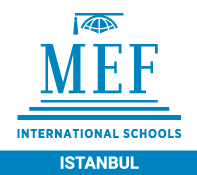The development of language is fundamental to the need to communicate; it supports and enhances our thinking and understanding. Language permeates the world in which we live; it is socially constructed and dependent on the number and nature of our social interactions and relationships. The learning process simultaneously involves learning language – as learners listen to and use language with others in their everyday lives; learning about language – as learners grow in their understanding of how language works; and learning through language – as learners use language as a tool to listen, think, discuss and reflect on information, ideas and issues (Halliday 1980). An appreciation of these aspects of language learning may help teachers better understand and enhance students’ learning. However, these three aspects are so inextricably linked they are best not thought of as discrete processes.
Language plays a vital role in the construction of meaning. It empowers the learner and provides an intellectual framework to support conceptual development and critical thinking. In the IB Primary Years Programme (IB PYP), it is recognized that the teaching of language should be in response to the previous experience, needs and interests of the student, rather than the consequence of a predetermined, prescriptive model for delivering language. The development of mother tongue language is crucial for cognitive development and maintaining cultural identity. Success in mother-tongue development is a strong predictor of long-term academic achievement, including acquisition of other languages.
Three strands are designed to interact with each other, working together to support the overall development of each student. Learning objectives describe the grade level expectations for each strand. Below are the strand descriptors.
Oral Communication: Listening and Speaking
Listening and speaking are natural, developmental processes that infants and young children are immersed in from their earliest experiences. Almost all children arrive at school with an impressive command of their mother-tongue language. However, the expectations and approach to language development in school is often very different from the successful learning environment the child has previously experienced. In the transition from home to school, or from one school to another, it is important to acknowledge the language profile of the individual and build on previous learning in ways that are positive and productive.
Written Communication: Reading and Writing
Reading is a developmental process that involves constructing meaning from text. The process is interactive and involves the reader’s purpose for reading, the reader’s prior knowledge and experience, and the text itself. It begins to happen when the young learner realizes that print conveys meaning and becomes concerned with trying to make sense of the marks on the page. The most significant contribution parents and teachers can make to success in reading is to provide a captivating range of picture books and other illustrated materials to share with beginning readers. Enthusiasm and curiosity are essential ingredients in promoting the desire to read. Children of all ages need to experience and enjoy a wide variety of interesting, informative, intriguing and creative reading materials.
Visual Communication: Viewing and Presenting
Viewing and presenting are fundamental processes that are historically and universally powerful and significant. The receptive processes (viewing) and expressive processes (presenting) are connected and allow for reciprocal growth in understanding; neither process has meaning except in relation to the other. It is important to provide a balanced programme with opportunities for students to experience both viewing and presenting. These processes involve interpreting, using and constructing visuals and multimedia in a variety of situations and for a range of purposes and audiences.



